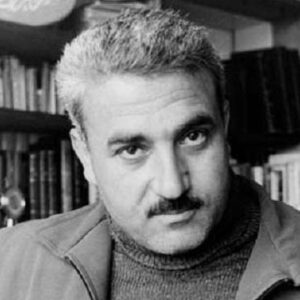The founding member of the Popular Front for the Liberation of Palestine was George Habash, also known as al-Hakim. In addition, he held the position of Secretary-General for the Palestine Front for a long time before resigning due to sickness. He is well known for his engagement in Palestinian political movements, particularly his leadership of the Popular Front for the Liberation of Palestine. He is a Marxist, a Christian, and a Palestinian. Several politicians and statesmen paid tribute to Habash after his death, including the Palestinian Prime Minister in office at the time, who remarked that Habash had “spent his life protecting Palestine.” Habash is described as being well-known as “the conscience of the Palestine revolution” in his obituary in “The Guardian.” On the other side, Habash has been referred to as “Terrorism’s Christian Godfather” by the American publication “Time Magazine.” Habash was at the forefront of several turbulent periods in Palestinian history during the time of his political activity, including the Six-Day War and Black September. Habash studied medical science, not political science, despite the fact that he is most known for his political beliefs and role in modern Palestinian history. He completed medical school, took first place in his class, and graduated.
Early Childhood & Life
On August 2, 1926, George Habash was born in Lydda, a town in the British Mandate of Palestine that eventually joined Tel Aviv.
Habash was reared by a Palestinian grain merchant family who practiced Eastern Orthodoxy. He participated in the Lydda church choir as a child.
Career of George Habash
After completing his undergraduate studies, Habash enrolled at the American University of Beirut to study medicine. He was not interested in politics at this time.
The expulsion of Habash’s family from their house in 1948 as a result of the Israeli Defense Force’s seizure of Lydda was a turning point in the evolution of Habash’s political philosophy.
Constanin Zureiq, a well-known Syrian Arab philosopher, gave lectures in the late 1940s and early 1950s, and his ideas influenced Habash’s political views.
Following medical school, where he graduated first in his class, he co-founded a clinic in Amman, Jordan, alongside Palestinian leader Wadie Haddad. He also performed labor in Jordanian refugee camps.
Habash founded the Arab Nationalist Movement (ANM) in 1951 to further the idea that the Israeli state ought to be opposed, including through force.
He was deemed to be somewhat at fault for the Jordanian coup attempt in 1957, and he was declared guilty in his absence.
He migrated to Syria, then a part of the United Arab Republic, in 1958. However, he only stayed there for three years before being forced to return to Beirut by the United Arab Republic’s dissolution in 1961.
Habash played a key role in the Arab Nationalist Movement’s restructuring efforts in 1964, when the Palestinian members were divided up into various regional authority groups.
Habash founded the Popular Front for the Liberation of Palestine in 1967 after Gamal Abdel Nasser’s popularity declined following the Six-Day War (PFLP). He was appointed the PFLP’s Secretary-General on December 11th, 1967.
Under his direction, the PFLP declared its Marxist-Leninist political affiliation in 1969.
Due to his role with the Popular Front during the Black September events, he was expelled from Jordan in 1970.
Habash organized four hijackings of airplanes in 1970 that took place over countries in the Persian Gulf, the Far East, Europe, and the United States. After the crew and passengers departed, the planes were destroyed.
He established the Rejectionist Front in 1974 to oppose the two-state solution put out by the Palestinian National Council.
Habash and the PFLP broke with Arafat’s policy in 1993 and allied with anti-Arafat parties with headquarters in Damascus.
As his health started to deteriorate in the second part of the 1990s, Habash gradually withdrew from politics, which led to his retirement as Secretary-General.
He established a study institute linked to the Popular Front for the Liberation of Palestine after quitting active politics.
Bigger Works of George Habash
The Popular Front for the Liberation of Palestine was founded by him. The major objective of the front was to use armed force to completely eradicate Israel as a racist state.
Personal Legacy & Life
Habash wed Hilda in 1961, and the couple went on to have two daughters, Mesa and Lama. Lama is an engineer, while Mesa is a doctor.
At the age of 81, he passed away from a heart attack on January 26, 2008.
Mahmoud Abbas, the president of the Palestinian National Authority, declared three days of national mourning in honor of Habash.
Abdel Raheem Mallouh, the deputy secretary-general of the PFLP, referred to Habash as a “historic leader,” and Ismail Haniyeh, the Palestinian prime minister, said that Habash “spent his life protecting Palestine.”
George Habash’s Net Worth
George is one of the wealthiest and most well-liked politicians. According to our research, George Habash has a net worth of $5 million, as reported by Forbes, Wikipedia, and Business Insider.
Trivia
Habash fled to Syria after being found guilty of a coup attempt and receiving a 33-year prison term.


